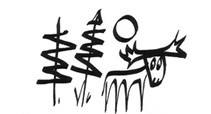When I contemplate the Mountain Caribou and the Ancient Forest, the words of our beloved Canadian singer songwriter Joni Mitchell reverberate in my mind: “Don’t it always seem to be that you don’t know what you’ve got till it’s gone.”
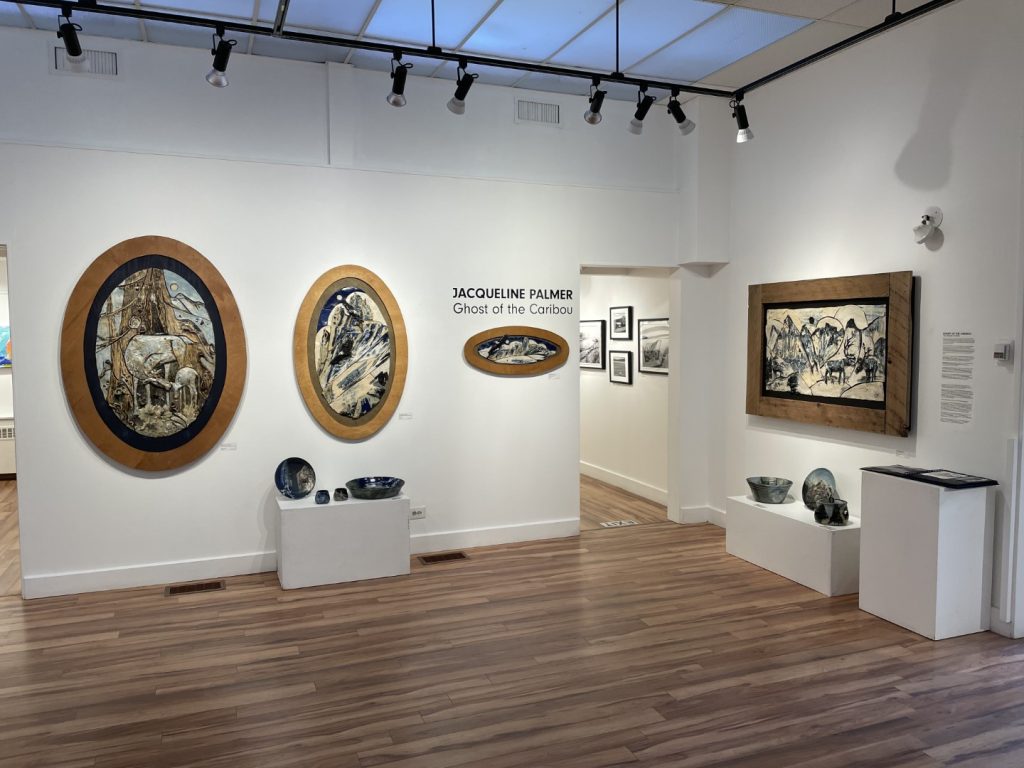
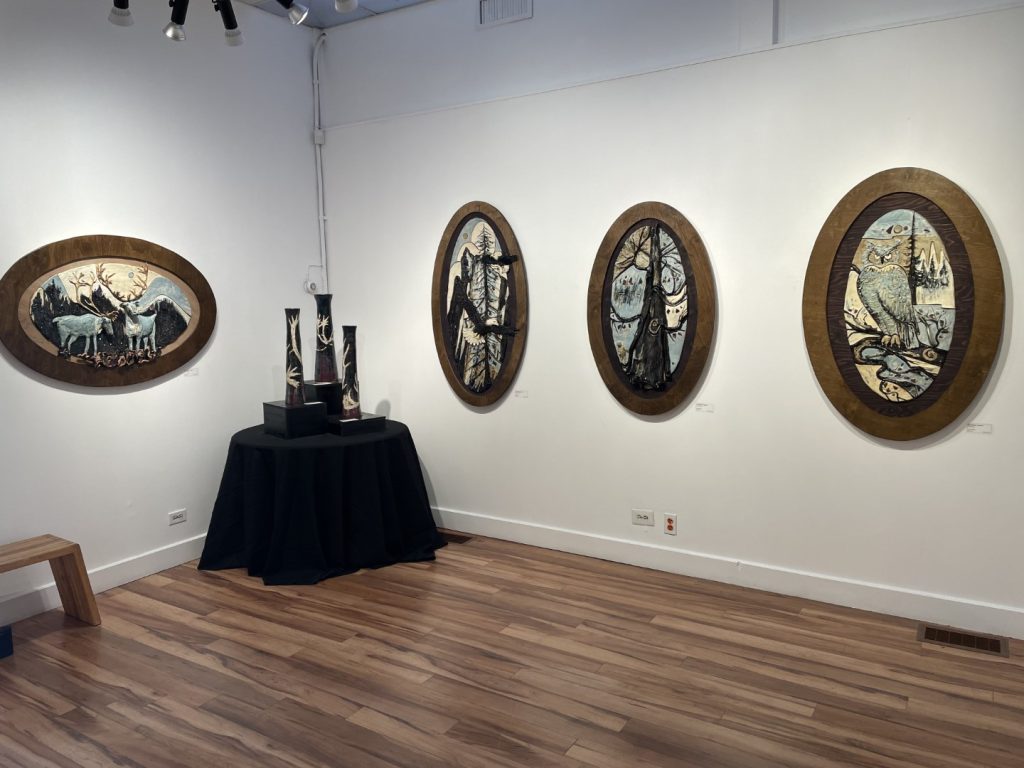
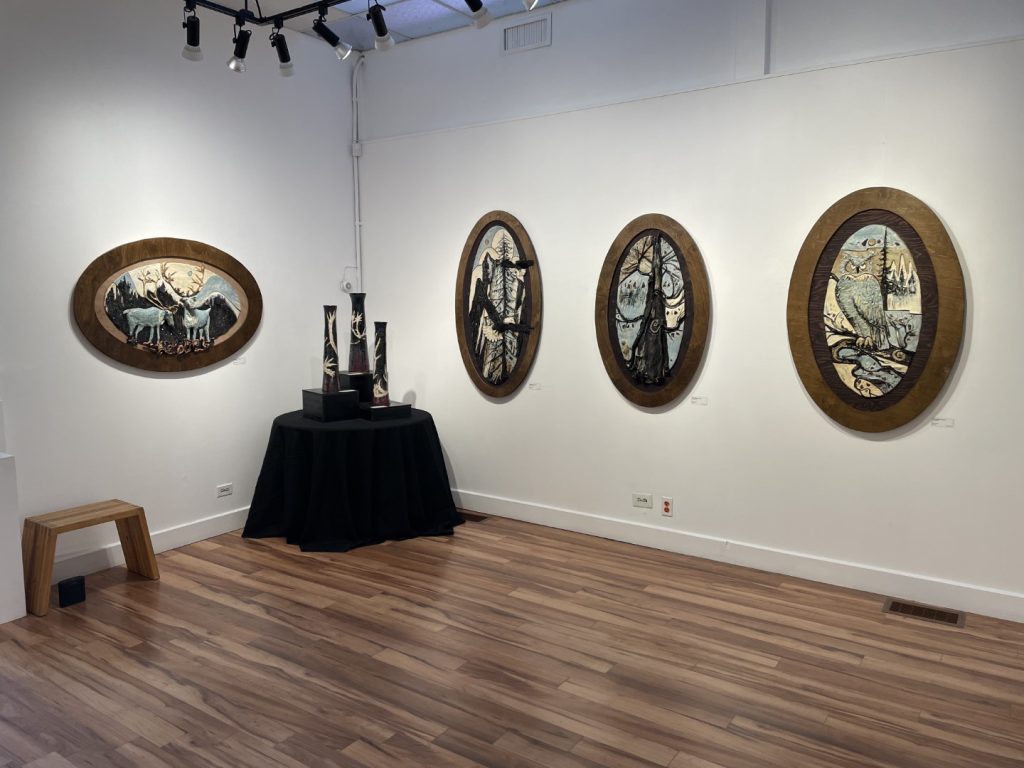
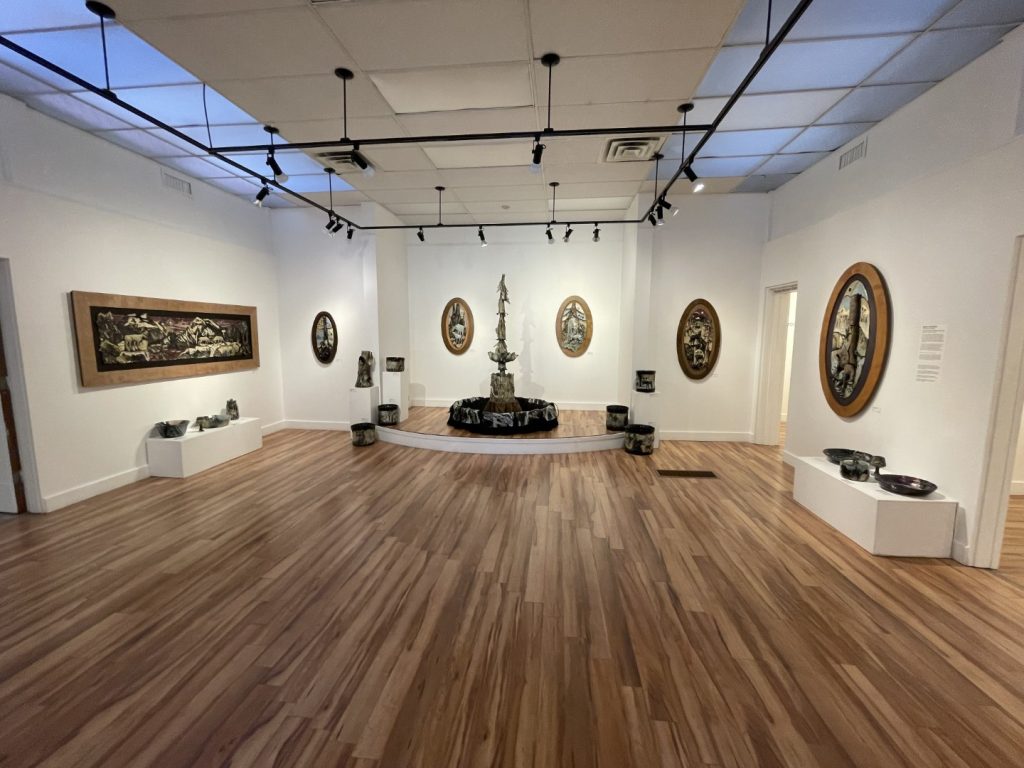
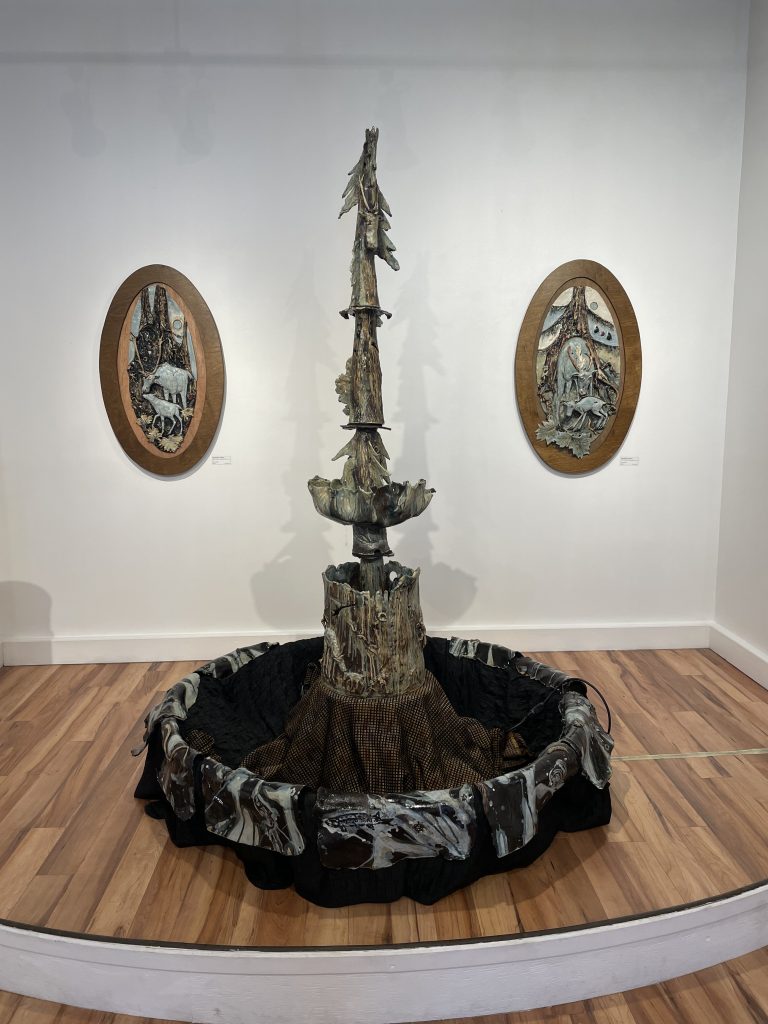
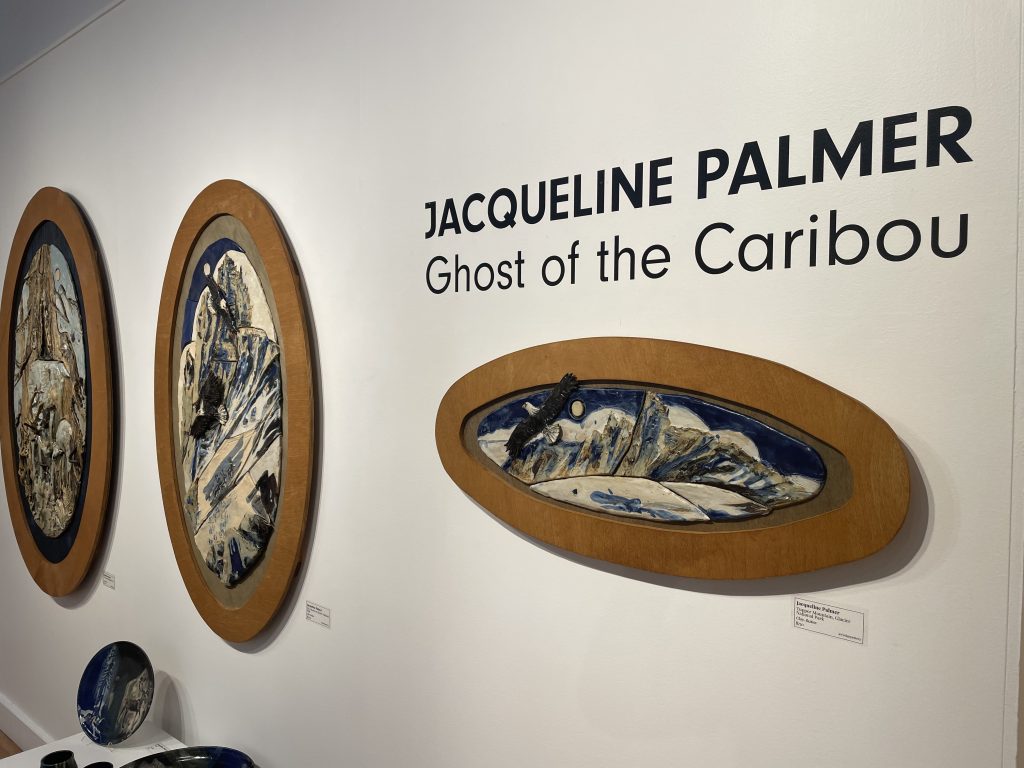
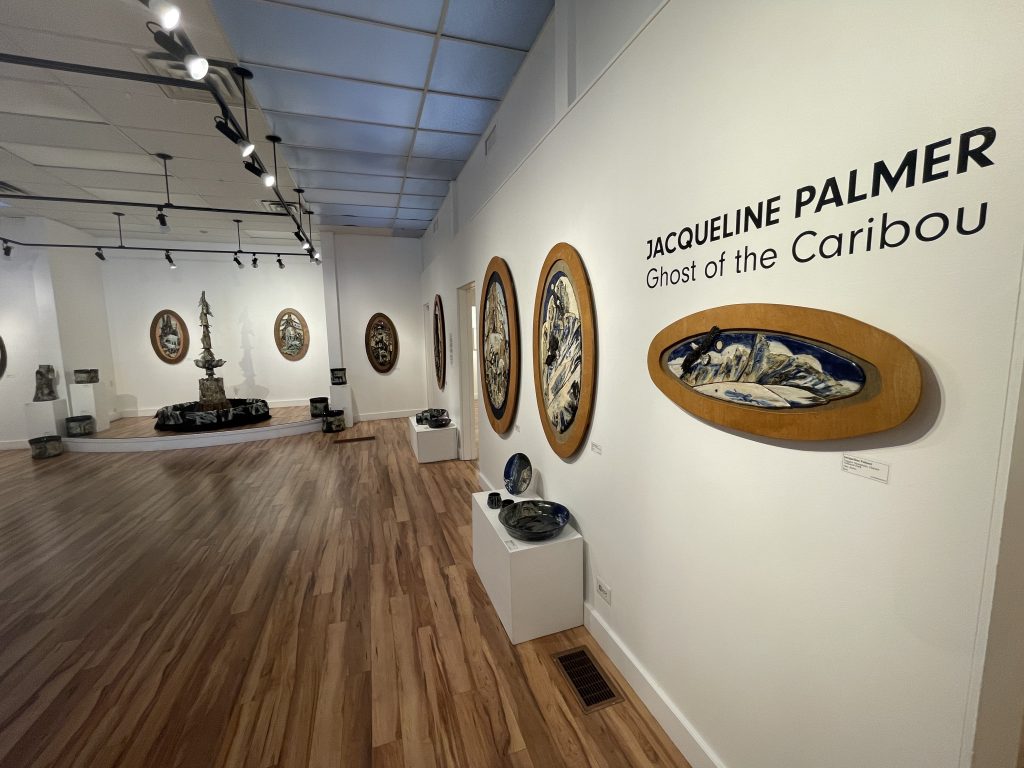
The Ghost of the Caribou
Jacqueline Palmer
Ghost of the Caribou is a tribute to the Mountain Caribou and the Ancient Forest of the world’s only Temperate Rainforest here in the vicinity of Revelstoke.
Once described as being “as numerous as ants on the landscape”, the unique Mountain Caribou are rapidly approaching extinction.
Sometimes referred to as the “Gray Ghost”, it’s an elusive creature, feasting on lichen of the old growth forest in the valleys then migrating into the harsh desolate reaches of the mountains during winter, navigating deep high alpine snow where other animals do not normally venture. Mountain Caribou are very much out of sight and out of mind. This exhibit strives to bring them sharply back into focus.
The medium I’m working with is a contemporary ceramic material I call clay fusion which incorporates 25% recycled paper into the clay body. The result is a product that is lighter, more resilient, shrinks less and enables shards or pottery to be incorporated into it.
Multiple layers my signature ash glazes used in my functional ware. They are layered and there are wax resist paintings alongside the sculptured relief of caribou, trees, mountains and birds. The Western Long-toed Salamander hides in the tree limbs or rocks in numerous pieces. If the forest is taken, salamanders will also disappear. Owls feature prominently, exemplifying wisdom and insight and as their habitat is threatened they are also vulnerable.
Each picture is a narrative or theme often emphasizing the interdependence and intimacy of caribou and forest. The Tree Fountain sculpture embodies this concept. At times the trees assume personification with gnarled limbs embracing and protecting the caribou.
The evolution of each scene begins with a conglomeration of thoughts, scenery, animals, trees, rivers and mountains. Lots of doodling on paper brings the composition together.
Once the layout is decided, sculptured relief brings the subject to prominence. The landscape and surroundings are also 3D. Then it all has to be carved up into irregular tiles or slabs to fit into the kiln. I incorporate the natural lines of contours of the subject and landscape and utilize the repetition of shapes to give cohesiveness. The lines also convey movement and give a sense of rhythm to the scene emulating the patterns and designs of the natural world.
Next shards of broken pottery are embedded strategically.
Taking a photo at this point enables the pieces to be more easily assembled after firing.
Once the pieces are bisc fired (the first firing)the jigsaw is reassembled then glazed. The glazing is challenging because it’s like painting blind. At this stage wax resist paintings are executed and I try to visualize a good balance of light and dark space in the glaze application and get contrast where I want something to stand out. Unlike paint, the true colours and nuances of glazes are not apparent until fired.
Due to shrinkage and the irregularity of the tiles, each piece must come through successfully to enable the entire scene to be completed. It’s all or nothing- when individual tiles are damaged or messed up, the whole picture usually must be redone.
This is perhaps an analogy with the caribou and forest. When individual elements of the environment are adversely affected or lost, it impacts the whole scene and the consequences may be irreversible.
